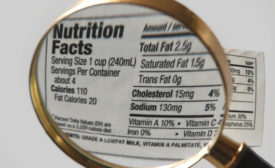Home » Keywords: » market research trends
Items Tagged with 'market research trends'
ARTICLES
Study: Breakthrough technologies enable food safety in dairy industry
Partnerships, mergers and acquisitions, co-development and other collaborative models are best suited to leverage new technology in the design of smart solutions.
August 29, 2017
Report: 76% of U.S. workers embrace automation, do not fear losing their job
New research finds future job growth will depend on a balance of upskilled and re-trained workers operating alongside automation.
August 24, 2017
Study: Fresh produce drives sales of vegetables category
U.S. fruit and vegetable production is a major business enterprise, and mostly focuses on processed fruits and vegetables.
June 27, 2017
Study: U.S. manufacturing, logistics industries grew dramatically over last generation
U.S. manufacturing production grew 11% since the dot.com bust (2000-03) and the ensuing economic turbulence of the 2001 and 2007-09 recessions.
June 12, 2017
Study: Consumers purchase more produce, low-fat dairy at supermarkets, supercenters, club stores
A study produced by USDA’s Economic Research Service (ERS) used household purchasing data to compute “healthy basket” scores for the foods and beverages purchased each month by a household.
May 9, 2017
National Grocers Association shares findings on grocery shopping trends
The results revealed high consumer satisfaction among independent supermarkets.
February 13, 2017
Study: Frozen fruit, vegetable market on the rise
Changing consumption patterns and busy schedules, as well as demand for newer flavors and ingredients have contributed to this growth.
January 27, 2017
Study: The purchasing power, influence of the multicultural Millennial
Nearly half of multicultural Millennials use their mobile devices to compare prices and browse when shopping, and almost 80% agree that the internet is a great place to buy products.
January 26, 2017
Mintel: Less than half of Americans consider their diet to be healthy
When making food purchase decisions, more than one quarter (27%) of consumers say that health concerns influence their choice of food.
January 17, 2017
Get our new eMagazine delivered to your inbox every month.
Stay in the know on the latest food and beverage manufacturing markets.
SUBSCRIBE TODAYCopyright ©2024. All Rights Reserved BNP Media.
Design, CMS, Hosting & Web Development :: ePublishing







